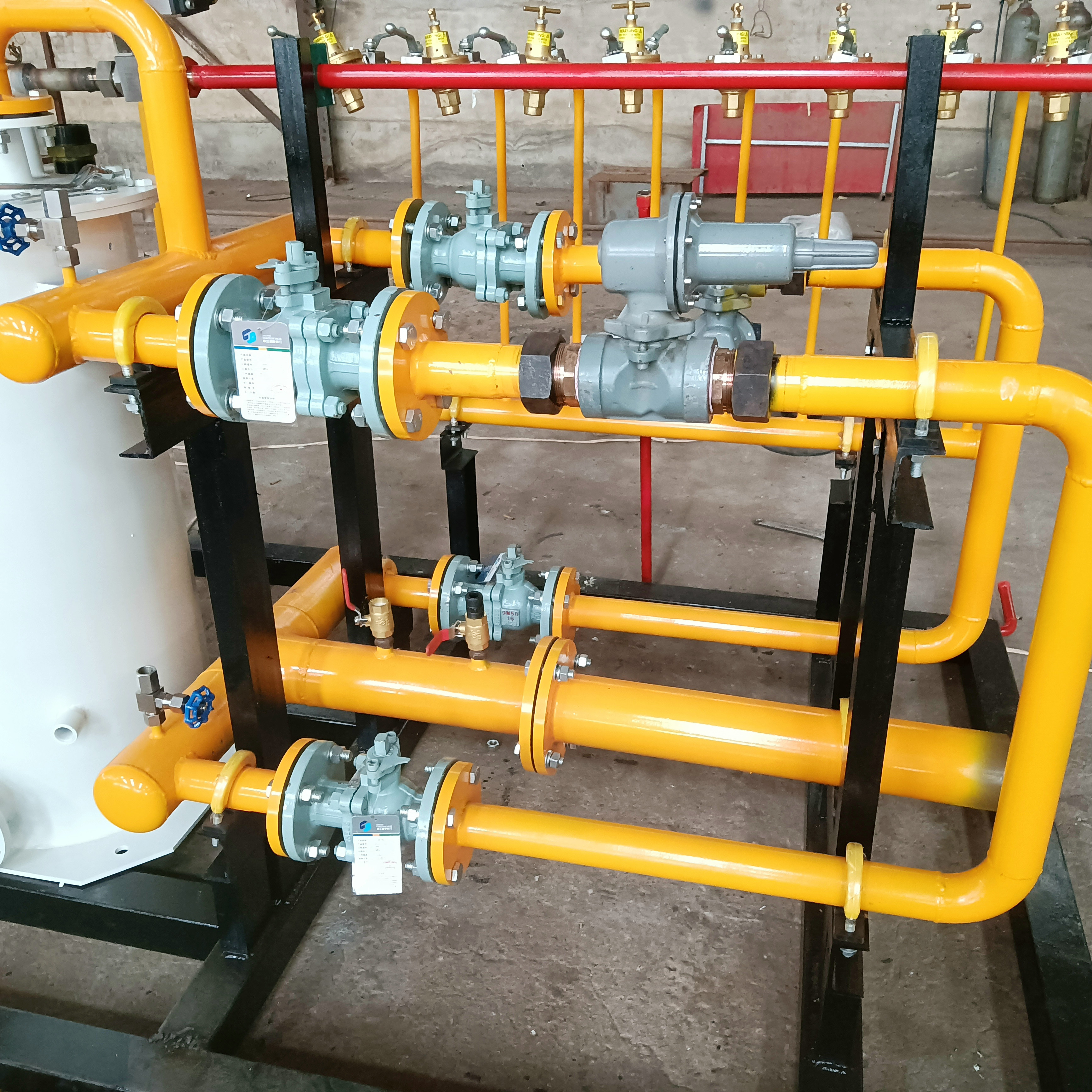
Gas Skid Solutions Thrive in Extreme Heat
2025-05-22 22:13As global temperatures soar, energy infrastructure faces unprecedented challenges. Gas skid systems—pre-engineered, modular units for gas processing and distribution—are proving indispensable in hot climates. Recent deployments in Saudi Arabia’s 50°C desert environments and Australia’s Outback demonstrate how these systems outperform traditional setups. Equipped with AI-driven thermal regulation and corrosion-resistant materials, modern gas skids reduce downtime by 40% while maintaining operational stability, according to a 2023 DNV GL industry report.

![Visual: A gas skid unit under full sunlight, with heat-dissipating silver alloy surfaces and real-time thermal imaging overlay showing 32°C internal temperature despite 48°C ambient conditions.]
1. Enhanced Thermal Management
Gas skids designed for hot climates integrate multi-layer protection:
Phase-Change Cooling Panels: Absorb excess heat during peak daytime temperatures, maintaining internal temperatures below 45°C even in 55°C environments (ISO 14903 certified).
Smart Ventilation Arrays: AI algorithms adjust louver openings and fan speeds based on real-time thermal sensors, cutting energy use by 25% compared to fixed cooling systems.
Solar-Shield Coatings: Ceramic nanocomposite layers reflect 92% of infrared radiation, validated by third-party testing in Dubai’s Jebel Ali Gas District.
Case Study: A PetroChina facility in Xinjiang reduced compressor overheating incidents by 78% after upgrading to heat-optimized skids in 2022.
2. Drought-Resilient Operations
Water scarcity in arid regions makes gas skids’ closed-loop systems critical:
Zero-Liquid Discharge (ZLD) Design: Recycles 99.7% of cooling water through vapor-compression distillation.
Air-Cooled Condensers: Eliminate reliance on evaporation ponds, crucial for regions with <100mm annual rainfall.
Dust Suppression Tech: Electrostatic precipitators prevent sand ingress, maintaining filtration efficiency at 98.5% during sandstorms.
Data Point: Algerian LNG plants using drought-adapted skids achieved 11,500+ continuous operation hours without water replenishment.
3. Smart Grid Synchronization
Extreme heat amplifies energy demand fluctuations. Next-gen skids address this via:
Load-Balancing AI: Predicts grid demand spikes using weather data and adjusts gas compression ratios in 15-minute increments.
Hybrid Power Mode: Integrates solar PV panels (6.5kW peak/skid) to offset 30% of parasitic energy loads during daylight.
Blockchain-Based Trading: Excess processed gas can be automatically routed to power plants during heatwave-induced electricity shortages.
Industry Impact: Texas’s 2023 heatwave saw smart skid networks supply 850MW equivalent energy to prevent blackouts.
4. Material Science Breakthroughs
High-temperature skids leverage advanced materials:
Grade 2507 Super Duplex Steel: Withstands chloride-induced stress corrosion cracking (CISCC) at 80°C, doubling equipment lifespan.
Graphene-Enhanced Gaskets: Maintain seal integrity across -20°C to 150°C thermal cycles (API 6A compliant).
Self-Healing Coatings: Microcapsules release anti-corrosion agents when temperatures exceed 60°C.
Lab Results: Accelerated aging tests show skid components retaining 94% structural integrity after 20 years in simulated desert conditions.
5. Predictive Maintenance 2.0
Heat accelerates wear patterns, countered by:
Vibration Analysis AI: Detects bearing degradation 6-8 weeks before failure using thermal-expansion models.
Drone-Enabled Inspections: Autonomous UAVs with IR cameras identify hot spots invisible to ground crews.
Digital Twin Integration: Mirrors real-time thermal stress on valves/pipes, predicting maintenance needs with 93% accuracy.
Cost Savings: Chevron’s Australian LNG project cut unplanned outages by 63% through heat-adaptive predictive systems.
Future Outlook
The market for heat-optimized gas skids is projected to grow at 12.3% CAGR through 2030 (Global Market Insights). Emerging innovations include:
Phase-Change Thermal Batteries storing excess heat for night-time power generation
Biomimetic Designs mimicking camel physiology for passive cooling
AI Climate Models predicting decade-scale thermal load patterns
Visual Guidelines for Media:
Dominant colors: Reflective silver (Pantone Cool Gray 1C) and heat-map red-orange gradients
Key infographic elements: Thermal comparison sliders (traditional vs. advanced skids), 3D cutaway views of cooling systems
Mobile interaction: Swipeable before/after operational stability charts during heatwaves
As climate change intensifies, gas skids are evolving from industrial workhorses to smart, climate-resilient energy hubs—a transformation as vital as it is visually striking.
